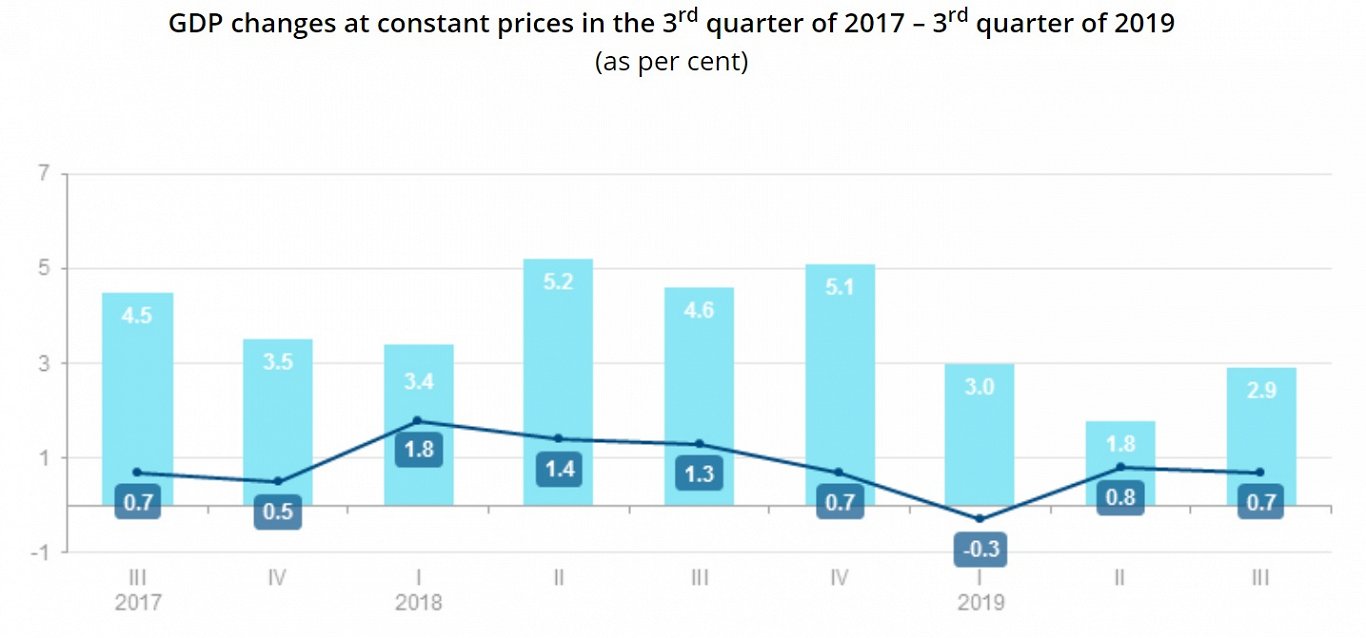In the 3rd quarter total GDP at current prices was EUR 8.1 billion.
As compared to the previous quarter, GDP rose by 0.7 %.
In the third quarter of 2019, according to provisional calculations, there was a significant rise of 29.5 % in agriculture (mainly in crop production), but in forestry and logging and fishery there was a drop of 3.7 % and 18.7 % respectively.
However, ijn the third quarter, Latvia's annual GDP growth lagged behind that of both Lithuania (3.7%) and Estonia (4.2%). Updated information will be available on 20 December.
Commenting on the data, Swedbank said:
"The rather solid economic growth of 2.9% in Q3 2019 looks somewhat weaker when the data are corrected for the number of working days, resulting in a less optimistic 1.9% year-on-year figure.
"A key contributor, rather surprisingly, given the bleak global environment, was exports. With services exports growing steadily throughout this year, third quarter saw a pick-up in goods export growth after a year-on-year fall the previous quarter. This was mostly thanks to excellent crop yields. Export success was evident also in the commendable performance of the wholesale trade sector. Furthermore, manufacturing saw a decent quarter, despite the problems in its key subsector – wood product manufacturing. However, we expect manufacturing growth to slow in the coming quarters, largely due to the fragile projected economic growth in key partners.
"Despite the weak retail trade data, but in line with a strong disposable income growth, private consumption picked up pace in Q3. From the sectoral perspective this was mostly linked to higher growth in such sectors as food services, arts and entertainment and professional services.
"The other “leg” of domestic demand – investment – has shown markedly weaker development this year as opposed to 2018, with Q3 being no exception. This is of course due to the increased global uncertainty, but also because of internal factors like the fading boost from the EU structural funds.
In a separate release the CSB said that, compared to October 2018, in October 2019 total retail trade turnover fell by 0.4 %. Turnover of retail trade in food products remained at the level of the previous year, but turnover of retail trade in non-food products (except for retail sale of automotive fuel) – increased by 0.3 %.






























